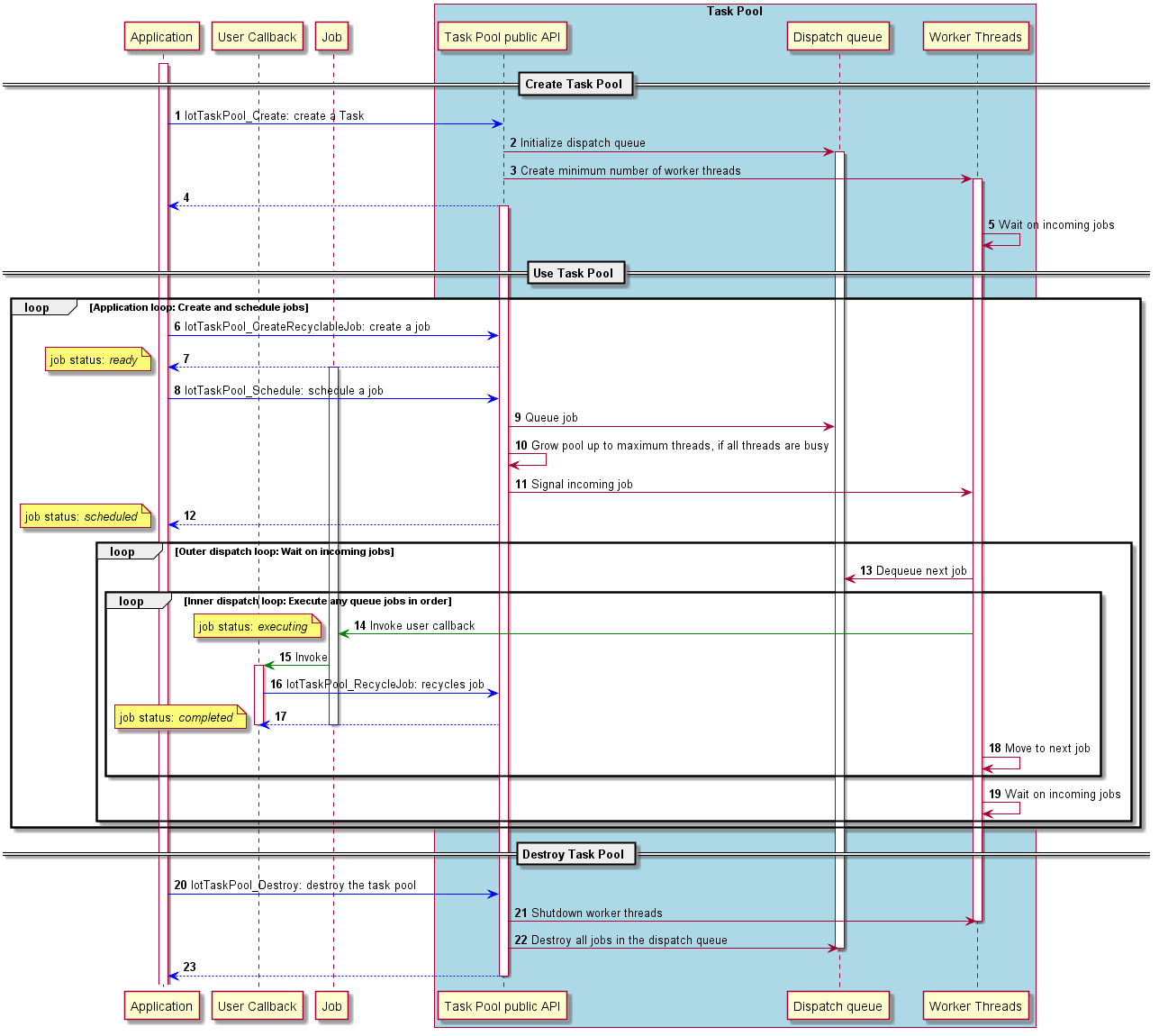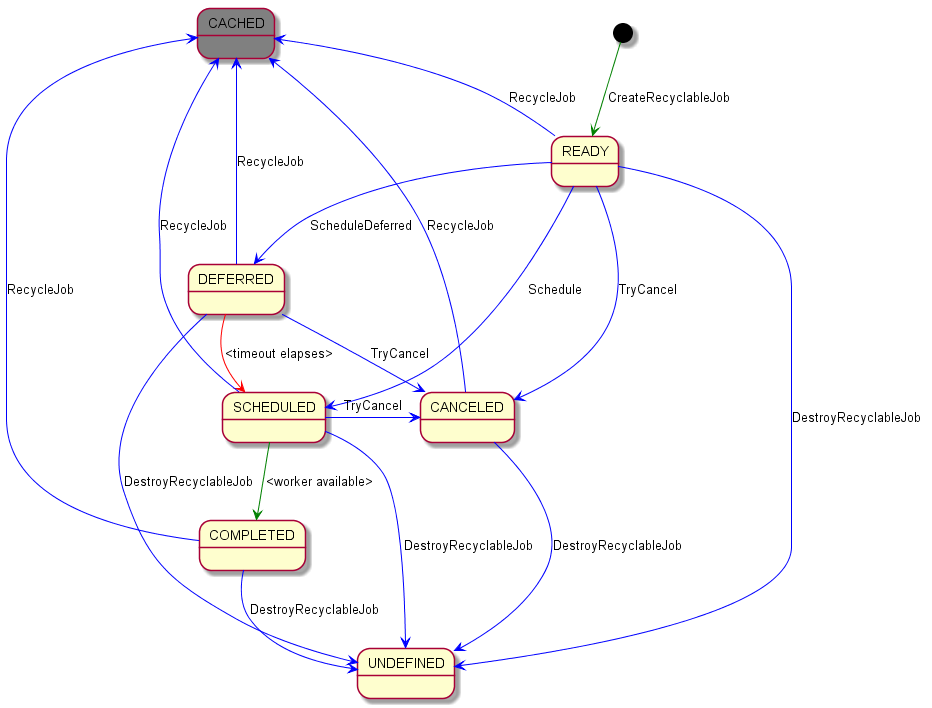Architecture behind the task pool library.
The sequence diagram below illustrates the workflow described above. The application thread is able to continue executing while the task pool library processes the operation.

The state diagrams for statically allocated, non-recyclable jobs with all legal transitions is presented in the diagram below. A static job can be created, schedule and canceled. Cancellation always succeeds, unless the job was already canceled, or completed (i.e. executed). Static jobs cannot be recycled and do no need to be destroyed. Static jobs are suitable for embedding on other data structures that own them.

The state diagram and legal transitions for all recyclable jobs is presented in the diagram below. A recyclable job is dynamically allocated. Just like a static job, a recyclable job can be created, schedule and canceled. Cancellation always succeeds, unless the job was already canceled, or completed (i.e. executed). Unlike static jobs, recyclable jobs can be recycled, or destroyed. Recycling a job effectively pushes a job to the task pool cache, where the task pool manages the lifetime of the job itself. The size of the cache is controlled via a compile time parameter. A user can get rid of a recyclable job by destroying it explicitly. Recyclable jobs should not be embedded in other data structures, but could be referenced from other data structures.

